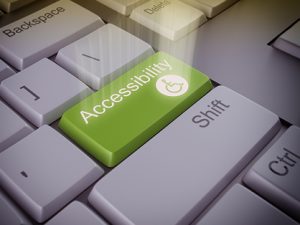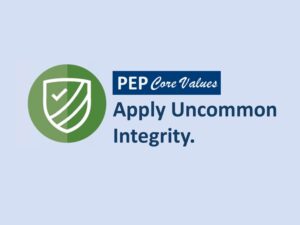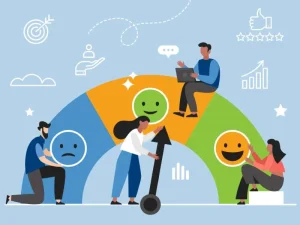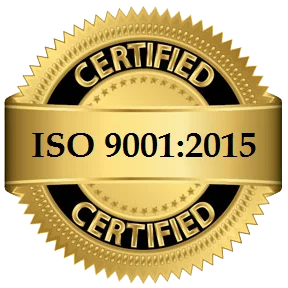Diversity. Equity. Inclusion. Accessibility.
In 1998, Congress added Section 508 to the 1973 Rehabilitation Act, requiring electronic information and technology provided by Federal agencies to be accessible for individuals with disabilities. DEIA came into sharper focus with President Biden’s 2021 Executive Order on Diversity, Equity, Inclusion, and Accessibility in the Federal Workforce. Adhering to Section 508 is crucial to this effort. It is essential that federal department heads, program managers, and contractors understand and implement 508 compliance practices.
Why is accessibility important?
A disability may include impairments in hearing, speech, vision, motor skills, or reading, as well as photosensitive epilepsy. If you think that people with disabilities comprise a small percentage of the population, here are a few numbers that may surprise you:
- According to the CDC approximately 12 million Americans 40 years and over have vision impairment, including 1 million who are blind.
- Approximately 37.5 million Americans aged 18 and over report some trouble hearing.
And while there are few compiled statistics on the number of people who have impaired motor skills (difficulty in or inability to perform tasks requiring a degree of manual dexterity), this problem affects those with numerous conditions, including arthritis, autism, Parkinson’s disease, cerebral palsy, multiple sclerosis, developmental disabilities, stroke, and traumatic brain injury, to name a few.
By neglecting 508 compliance we exclude a large segment of our population from the exchange of information and access to digital communication.
Who should be aware of Section 508 accessibility requirements?
The Section 508 amendment applies to all Federal agencies when they develop, procure, maintain, or use electronic and information technology. Compliance is the responsibility of anyone who publishes content developed with federal funds and Federal employees or supervisors who:
- Assess or manage Section 508 compliance or establish best practices.
- Procure technology or equipment.
- Plan or conduct meetings and conferences.
- Create or publish content.
How accessible is your information?
When we think of accessibility, what may first come to mind is physical accessibility – the need for a wheelchair ramp or an elevator is easy to visualize. Information accessibility, on the other hand, is often an afterthought or something we may overlook altogether. Or we may think of it as an issue that will be addressed by the user and whatever technology is available to them.
While that’s certainly true, we may not realize that our content must properly interact with that technology. As an analogy, a consumer can’t turn a gas-fueled car into an electric vehicle. The car must be built to run on a battery. Likewise, documents and media must be built from the ground up to function properly with assistive technologies such as voice recognition software and screen readers.
Where can I get help to comply with Section 508 standards?
The Government Services Administration (GSA) has developed a wide array of technical assistance to support agencies, contractors, the private sector in their Section 508 compliance efforts, all available on the Section 508.gov website.
Content managers or creators and meeting organizers can use the GSA’s Content Creation page to get trainings and manuals for developing documents, media, meetings, and online content. Click the plus signs to open a full menu of:
- Authoring guides, video training modules, and accessibility testing tools for producing documents, presentations, spreadsheets, and PDFs with Microsoft programs.
- How-to videos and instructions for making audio and video accessible.
- Tips and techniques for authoring accessible websites and social media.
- Instructions for creating fillable PDF forms and enabling electronic signatures.
- A page of tips for planning accessible virtual and in-person meetings.
Another useful resource is the Achieving 508 Compliance page on Workforce GPS. This includes links to summaries of the Section 508 guidelines for each of the areas mentioned above.
IT managers and procurement officers will find self-paced courses on IT accessibility on the GSA’s Training, Tools & Events page. Click the plus sign next to Online Training Courses to find:
- An overview of Information and Communication Technology (ICT) accessibility for government executives.
- The basics of procuring Section 508 conformant products and services.
- A full technology accessibility playbook.
So, let’s just do it.
Whether you are a federal employee or contractor or a private sector manager or business owner, accessibility shouldn’t be an afterthought. Putting information within everyone’s reach is the right thing to do – and so much more. It widens our outreach. It increases the flow of fresh ideas. It broadens our talent pool. It expands our possibilities. It brings us closer to making DEIA a reality.
About the Author: Mary Ellen Polentz has written blogs and numerous informational resources covering subjects such as youth apprenticeship, marketing and promotion, community outreach, and more.
To Learn More about PEP and our experience as a federal contractor visit our Services page or contact us. To be the first to receive our next blog post, please join our mailing list. You can download a copy of the PDF here.






